Looking to increase your referral rates for your agency? Or a new marketing strategy for your hospice? This article is for you.
Marketing a hospice is a day-and-night difference from your run of the mill campaigns.
Due to the sensitive nature of a hospice model and the ill-informed ideas floating around, hospice marketing needs to take a different approach.
An approach that is based on trust, relationship building, and is unique to your agency.
In today’s article, I’ll share with you the following:
- Mistakes to avoid when marketing a hospice or palliative care center
- What to do BEFORE starting your marketing campaign
- How to increase hospice referrals
- New hospice marketing ideas
- And a lot more…
without further ado, let’s start.
Mistakes to Avoid in hospice marketing
Before we dig into the marketing ideas, let’s see common pitfalls so you can avoid them.
1) Focusing on the features and benefits in your marketing
Despite what other marketers will tell you, you shouldn’t focus on marketing the benefits and features of your hospice. While this is counterintuitive, it is better to steer clear from traditional marketing when it comes to healthcare and hospice in particular.
To know why that’s the case, let’s discuss why people buy.
In his book, SPIN Selling, Neil Rackham, illustrates how different products or services require different sales techniques depending on how big is the buying-decision.
In one chapter, the author describes an experiment in closing.
A photography store had two different counters—one for small purchases (film, cheap cameras) and one for the expensive stuff (SLRs, pricy lenses).
At the small-ticket counter, the sales staff routinely used high-pressure closing techniques (heavily focused on features and benefits) with success.
At the high-ticket counter, a different team of reps took a more laid-back, low-pressure approach (with a focus on building rapport), also with success.
So the store had the reps switch counters.
And the reps who were accustomed to twisting arms failed—hard.
The closing techniques that worked well on small purchases backfired with customers considering bigger items.
Meaning, As the decision degree of importance increases, the sale becomes more and more about trust.
Here’s a graph that illustrates how trust relates to decision making
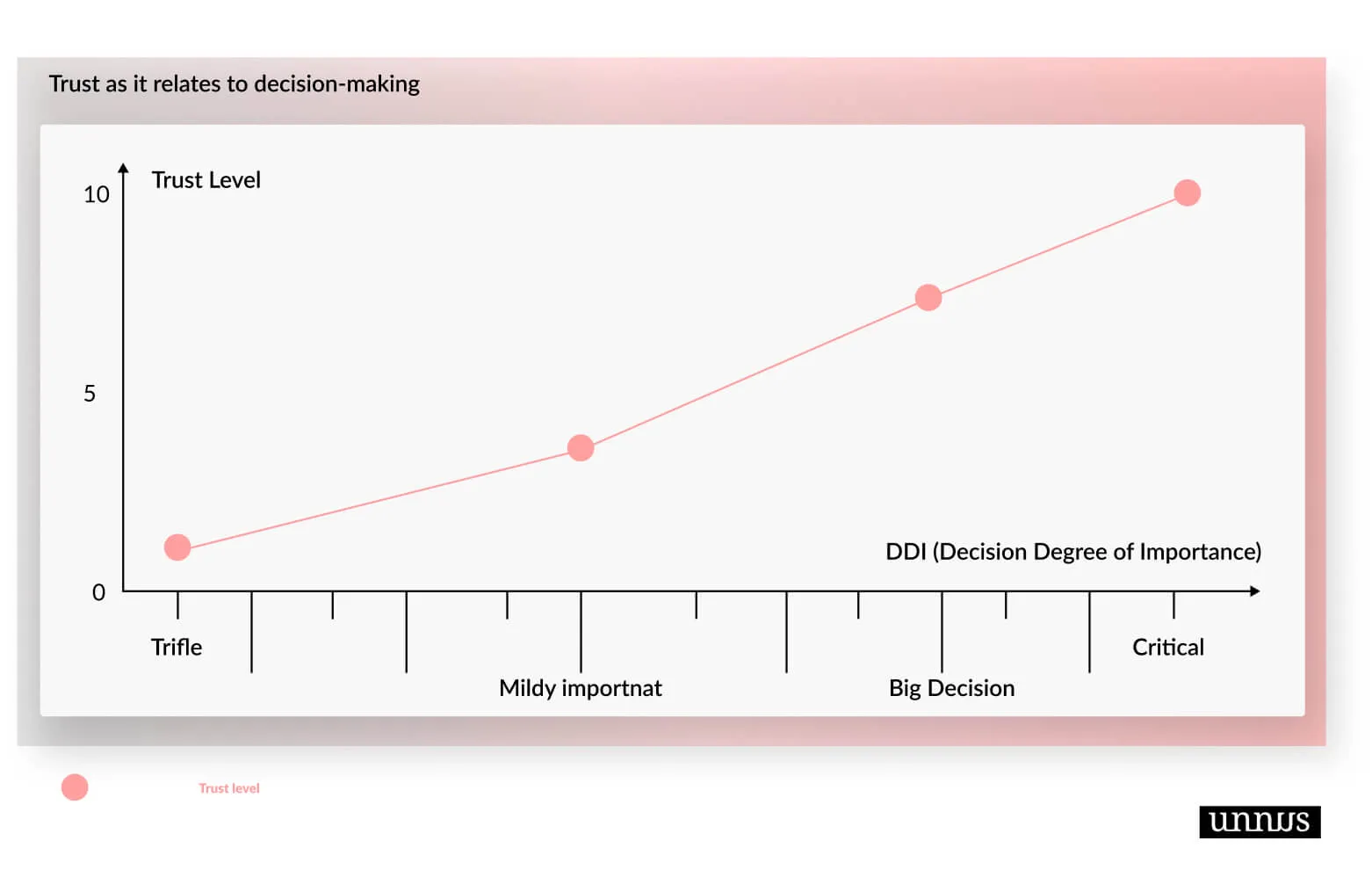
The same applies when marketing your hospice. Deciding on an end-of-life partner is not an easy decision. And no matter how much better equipped your agency is, if your referral source or patient doesn’t trust your brand, they won’t be willing to choose you.
But why do people base such decision making on trust? And why is it such a powerful way to increase referrals? I’ll discuss this in the next section.
2) Not facilitating the patient transition to hospice before marketing
Most agencies focus on acquiring referrals without consideration for what happens after that. More often than not, Hospices walk away from business pretty much all the time. Either by being hard to deal with, assigning the responsibility on the consumer or the referral source, or having frameworks that postpone the care services that individual needs.
Before starting marketing your agency, you should facilitate the patient transition to hospice and make it as easy as turning on a light switch.
Physicians don’t have the time, experience nor mental capacity to deal with additional procedures, so the less fraction you make the better your chances of increasing the referral rate.
3) Disregarding Direct-To-Consumer marketing
Direct-to-consumer refers to selling your care services directly to patients or the patient’s family, bypassing any third-party physicians, hospitals, or any other middlemen.
Marketing your hospice directly to your customer can be difficult. After all, most patients will see your offer as “giving up” or a way for you to gain profit from an extended period of stay.
There are several misinformation barriers you need to knockdown. And a great way to do this is by educating your patients through multiple communication channels. Your marketing should focus on educating your audience on the importance of quality end-of-life and the consequences of late referral to hospice.
Your marketing should inform patients in a way that inspires them to take action and see the value you provide for them.
Another benefit of DTC marketing is that it makes physicians less reluctant to refer to your agency. When patients are more open to the idea, the physicians will have an easy time referring patients to you.
4) Not taking advantage of the digital landscape
In an age where information is on your consumer’s fingertips and considering that 83% of adult internet users search online for health advice, hospice agencies are missing out on a big chance of acquiring patients online.
If you can be the go-to resource for patients to answer their hospice-related questions, they are likely to prefer your agency over the others. Most importantly, by being “there” and in their face frequently, you’ll start building trust and familiarity for your brand.
This is a huge advantage for your agency to differentiate itself from the competition and a little-used strategy to acquire more patients.
Another way that this could benefit you, is that the online experience is a great channel to have conversations with potential patients. This could be your chance to educate, debunk the myths, and lure customers into your hospice.
Before Marketing your Hospice, Do This
Now you know what to avoid, let’s go through some of the key elements that, if left untreated, will break your hospice marketing campaign.
1) Build and cultivate your hospice brand
# Note
Marketing without branding is an accumulation of tactics that comes with an expiration date.
Branding is the management of all components that make a hospice brand for which your target audience believes there’s no substitute.
Branding is about creating trustworthy brands that your consumer has an affinity with. Building a brand means differentiation from competition, gaining a cult-like loyalty, enjoying predictable referral increases , and an established place in the market.
Most agencies over-invest in marketing and focusing on acquiring new referrals rather than retaining existing ones. This approach is 25x more expensive than other means of increasing referrals.
Hospice should reroute their marketing to empower and build their brand. By building an established brand for your hospice agency, you gain a competitive edge in the market.
This means you will be less reliant on the endless marketing efforts to acquire new leads. And thus decreasing your marketing costs and enjoying the predictable profit.
2) I trust, therefore I refer
Trust is the ultimate shortcut to a buying decision and the bedrock of modern branding
― Marty Neumeier
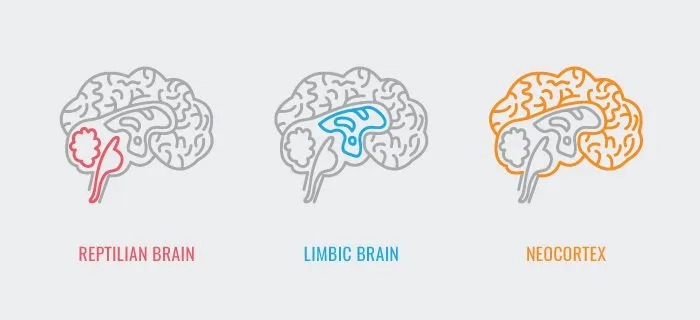
Earlier I hinted at the importance of trust when marketing your hospice. Let’s dig deep and see why trust plays a significant role in increasing your referral rate.
According to a recent study , most of our decision-making is processed in the limbic system, the part of the brain that is responsible for emotions and trust responses. Harvard Business School professor Gerald Zaltman, further says that 95% of our buying-decision are based on emotions.
To further illustrate the importance of trust in influencing the referral process for your agency, I’ll share with you another example from the author of Start With The Why, Simon Sinek.
In his book, he discusses the importance of your why (the purpose for your company to exist besides making a profit). He says that most companies know what they do and how they do it, but most few of them know why they do what they do.
Why does your company exist besides making a profit and why would anyone care? This seemingly simple but hard to answer question is the difference between a ridiculously profitable and loved brand and their generic counterpart.
People are more inclined to help and take sides with brands that can articulate their purpose. The reason for this is that we value meaningful relationships and trustworthy messages more than “generic value offers”.
Let’s give an example of a Why Message (trust-infused communication) Vs What message (offer/benefit-driven communication).
#~First (WHAT MESSAGE):
We’re FullLife Hospice, we provide personalized care and support through our comprehensive care plan. We help treat patients' symptoms and give them the best end of life quality care.
It states who they are, and what they do. Great. It also explains how this benefits patients (treating symptoms/quality of life). Let’s see how the same message will look like when your “why” is well articulated.
#~SECOND (WHY MESSAGE):
We’re FullLife, Our agency was born on the foundation to maintain patients' dignity and empower them in their hardest time. We don’t know if there is life after death. But we know there is life before death. And this is where we come in. We provide patients seamless experience in their ending journey. Help us be there at the very end.
Being vocal about the Why in the second pitch does one thing that gains you a competitive edge. It influences preference-based judgments about your agency.
When you use a purposeful message, your communication is perceived by the limbic system, the part of the brain that is responsible for emotions and decision-making.
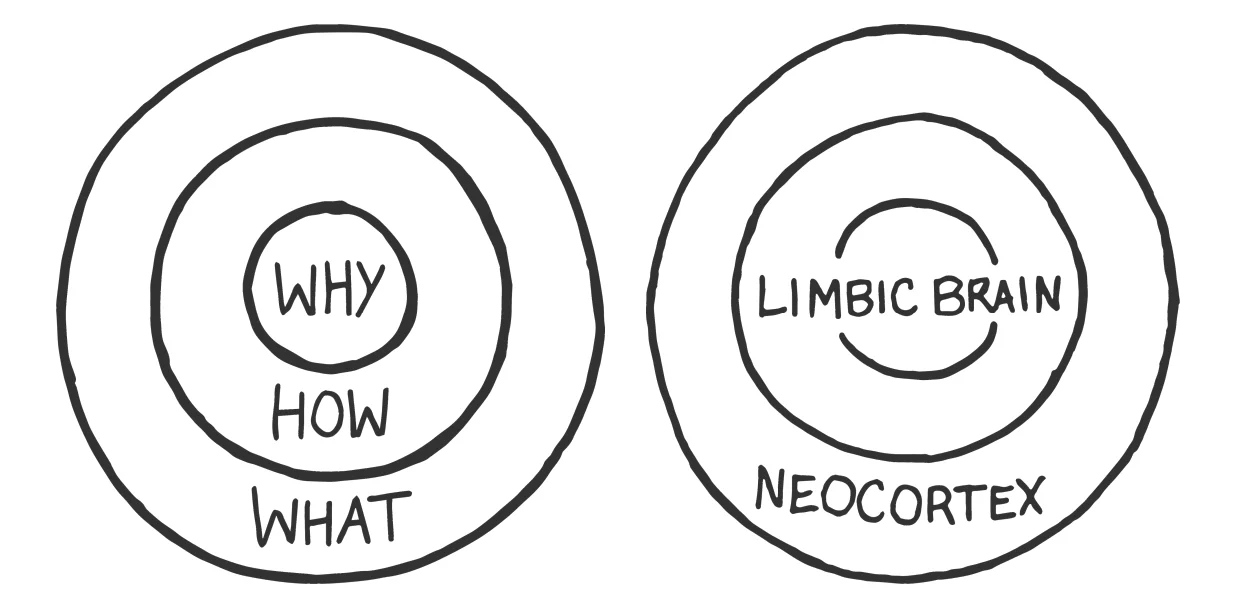
This kind of communication sends trust signals and soars your referral rates from your referral partners.
3) Differentiate: What makes you the only one?
For the first time in history, competition does not come from competitors but from the extreme market clutter (large volume of advertising messages). And our brains deal with this clutter the best way we know how—by blocking most of it out.

In the ever-increasing era of brands, physicians and referral sources are bombarded by marketing messages almost every 3 seconds. This overabundance of “me too” brands will make it hard for your hospice agency to stand out. Every brand is fighting for your audience’s attention.
And in a hyper-competitive arena, not standing out is the same as being invisible. So, for your hospice to thrive, it needs to be differentiated, flavored, and sprinkled with a dash of personality.
So how do you differentiate your agency?
#~Positioning: developing a differentiator for your hospice
Positioning is where your hospice stands in relation to other services.
The positioning strategy is all about focusing your agency brand on a specific audience and specific value offering. It’s about building perception and infusing uniqueness into your hospice. In this strategy, you develop a differentiator or a unique element for your agency that will radically set it apart.
To illustrate, let’s see some of the positioning statements across the healthcare sector.
Healthier™ , An Orlando Based hospital, is positioned as the safest hospital in town. Although it offers the same service lines, it’s focused on safety and welfare.
Patients visit Healthier because it’s a risk-free choice. In their ads, visual identity, communication, everything emphasizes safety.
Healthier’s positioning statement
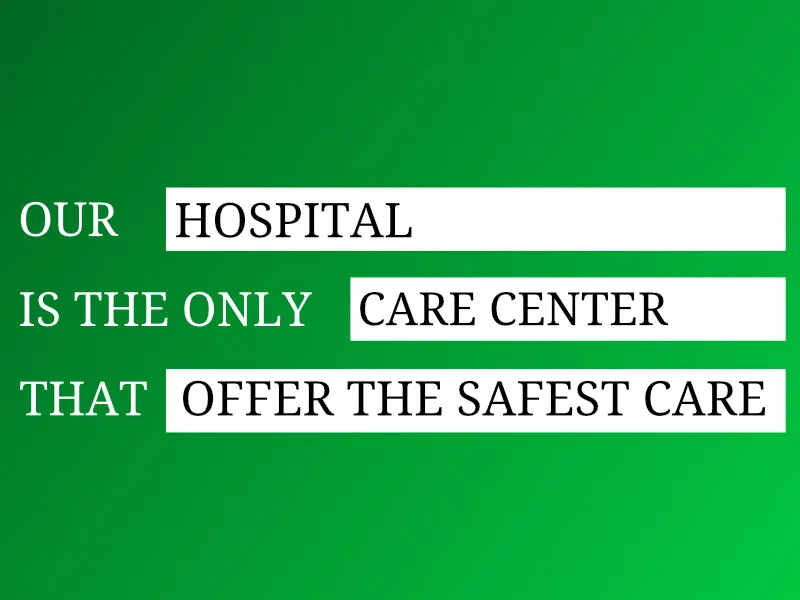
Another positioning example comes from Odontia, a dental practice based in Pasadena, CA. Odentia is positioned as the pain-free dental experience. They understand how patients are reluctant to visit the dentists because of the looming fear of a bad dental experience.
Odentia is the only dentistry service that puts painless dental experience as its #1 Priority.
Odentia’s Positioning Statement:
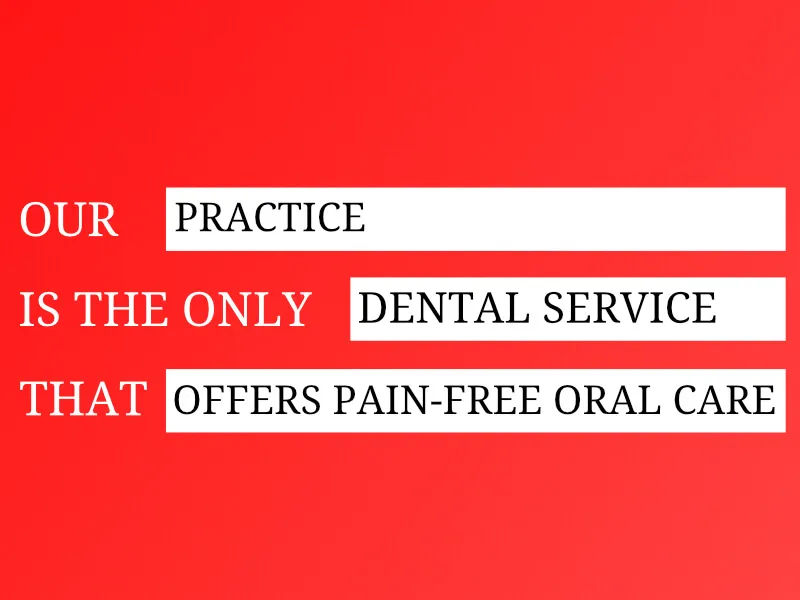
Hospice Marketing Ideas
Now you are well-equipped to begin marketing your hospice, let’s see some marketing strategies that you can start implementing to increase hospice referrals.
1) Brand Storytelling Strategy
Your patients, patient’s families, and the physicians, all already have a preconceived notion about the nature of hospice. Most of which is completely wrong or ill-informed. It is your job to educate, inform, and refute any misinformation out there.
And to do that, you need to conduct a storytelling campaign. So what is storytelling and how this can benefit your agency?
Brand storytelling is a branding and marketing strategy, aimed to inform your audience about your hospice in a digestible manner.
In this strategy, instead of marketing directly your offers, you take a different approach. An approach where you tell stories about palliative care, your agency, and how this can benefit your consumers and referral partners.
What’s great about this strategy is that you narrate easy-to-digest stories about your brand (increasing its awareness) and at the same time, you’re educating your prospects and conveying the correct image of hospice.
So how to conduct a brand storytelling campaign for your hospice?
Any storytelling campaign consists of 3 elements: Core Message, Secondary Messages, and Communication channels.
The steps are straightforward:
- First, you form a Core Message: A message you want your hospice brand to be known about (think of it as “the overarching theme” )
- Take that Core Message and dissect it into smaller chunks of messages called Secondary Messages (Think of them as subtopics that make up the big theme) and then
- Start by forming smaller stories about these Secondary Messages.
- Finally, distribute these messages across media outlets (Articles, Social Media Posts, Press, Brochures, Radios, etc…)
Here’s a visual representation of how a core message might be distributed across your marketing channels.
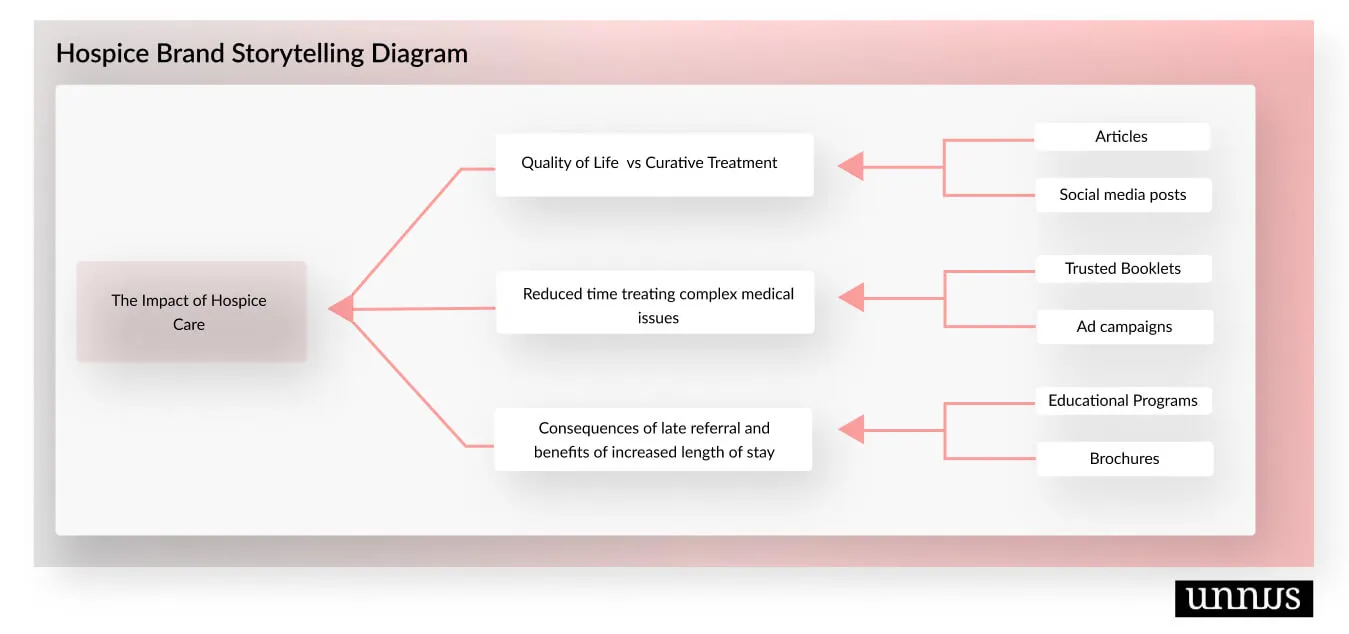
2) Run educational programs
While physicians are not the patient and family’s single source of information about the hospice, they are an influential part of the decision.
Educating your county’s physicians can improve your referral rate. An educational program that runs locally will increase the awareness of how hospice care can also benefit physicians whose compensation is tied to quality metrics.
For example, ACOs can increase their bonus payments by keeping patients' costs under control. Or how they can save and lessens financial pressure from the patient’s family.
Hospice of St. Mary’s did the same strategy and has substantially soared their referral rate each quarter with an increased length of stay.
3) Participate in healthcare conferences to expand your sphere of influence
Participating in healthcare conferences gives you the full stage to educate hospital executives and referral partners about your hospice and how it’s different. This is a great chance to create awareness for your agency’s brand and expand its sphere of influence.
A great way to take advantage of these meetups is by sharing informative presentations. Sharing data and statistics of the positive impact a hospice can have on a hospital is a great way of increasing your referral rates.
You can also take the chance to refute some of the misconceptions about the patient transition process and how your agency can make the transition seamless. Most physicians are reluctant to deal with the coordination that comes with referring to a hospice.
4) Launch Authoritative Hospice Podcast to increase your referral network
An underutilized strategy to build your relationships with potential physicians and healthcare executives is by having them as guests on your hospice show.
The aim here is manifold:
- Having physicians on your podcast builds trust and rapport with your agency’s brand
- It increases your credibility and awareness of your brand
- It gives you the chance to talk to multiple healthcare personnel and educating them on hospice
- It expands your referral network and can skyrocket your referral rates.
Remember, the aim here is not to be the next 10 million listener show. The aim here is to make relationships with your community’s physicians and potential referral partners.
5) Use digital marketing strategies
With 83% of adult internet users search online for health information, creating an online platform where you share tips and informational content about hospice can be a competitive edge for your agency.
Being online also makes your hospice more “approachable” and always top-of-mind. In addition to the ability to interact with physicians in a two-way conversational style, you’ll be able to provide them with valuable information about hospice and how it benefits their hospitals.
Here is a list of online marketing strategies you can implement for your agency:
- Content Marketing
- Content marketing is a strategic marketing approach focused on creating and distributing valuable, relevant content to attract and retain referral sources.
- Social Media Marketing
- Social media marketing can be used to connect with your audience to build your hospice brand, increase referrals, and traffic towards your website
- Email Marketing
- Email marketing is a strategy based on sending emails and developing relationships with potential referral partners and physicians
- PPC & Paid Advertising
- PPC stands for pay-per-click, a model of internet marketing in which advertisers pay a fee each time one of their ads is clicked. It’s a way of buying visits to your agency website.
- Online PR
- Online Public Relations is a great way to communicate with potential customers for your agency in the online public realm.
- Target the Online Communities
- Online communities are a great way to grow your online presence and to catch insights. Being around people with similar interests and exchanging medical knowledge is a good way to develop relationships for your agency.
The secret to a successful hospice marketing campaign
Marketing any hospice needs to be built on a multitude of relationships with referral sources and trust from the patient’s stakeholders.
If your marketing campaign is not backed with a purposeful brand, it will have little chance of succeeding. Communicating with unique positioning and sending ‘trust signals’ through your marketing is a critical part of its success.
If you’re looking to start your marketing campaign on a grounded brand, you can check our free step-by-step healthcare branding strategy.
Or if you’d like us to help you put on a branding strategy for your agency, you can reach us out here .


